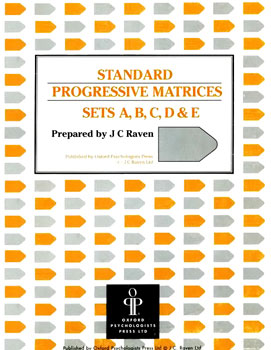Genius is a characteristic of original and exceptional insight in the performance of some art or endeavor that surpasses expectations, sets new standards for the future, establishes better methods of operation, or remains outside the capabilities of competitors. Genius is associated with intellectual ability and creative productivity. The term genius can also be used to refer to people characterised by genius, and/or to polymaths who excel across many subjects.

An intelligence quotient (IQ) is a total score derived from a set of standardised tests or subtests designed to assess human intelligence. The abbreviation "IQ" was coined by the psychologist William Stern for the German term Intelligenzquotient, his term for a scoring method for intelligence tests at University of Breslau he advocated in a 1912 book.

Mensa is the largest and oldest high-IQ society in the world. It is a non-profit organisation open to people who score at the 98th percentile or higher on a standardised, supervised IQ or other approved intelligence test. Mensa formally comprises national groups and the umbrella organisation Mensa International, with a registered office in Caythorpe, Lincolnshire, England, which is separate from the British Mensa office in Wolverhampton.
The Stanford–Binet Intelligence Scales is an individually administered intelligence test that was revised from the original Binet–Simon Scale by Alfred Binet and Théodore Simon. It is in its fifth edition (SB5), which was released in 2003.
Marilyn vos Savant is an American magazine columnist who has the highest recorded intelligence quotient (IQ) in the Guinness Book of Records, a competitive category the publication has since retired. Since 1986, she has written "Ask Marilyn", a Parade magazine Sunday column wherein she solves puzzles and answers questions on various subjects, and which popularized the Monty Hall problem in 1990.
Intellectual giftedness is an intellectual ability significantly higher than average. It is a characteristic of children, variously defined, that motivates differences in school programming. It is thought to persist as a trait into adult life, with various consequences studied in longitudinal studies of giftedness over the last century. These consequences sometimes includes stigmatizing and social exclusion. There is no generally agreed definition of giftedness for either children or adults, but most school placement decisions and most longitudinal studies over the course of individual lives have followed people with IQs in the top 2.5 percent of the population—that is, IQs above 130. Definitions of giftedness also vary across cultures.

The Prometheus Society is a high IQ society, similar to Mensa International, but much more restrictive. The entry criterion, achievable by a number of tests, is designed to be passable by 1 in 30,000 of the population, while Mensa entry is achievable by 1 in 50. The society produces a magazine, Gift of Fire, published ten times per year.
The Wechsler Adult Intelligence Scale (WAIS) is an IQ test designed to measure intelligence and cognitive ability in adults and older adolescents.
The Miller Analogies Test (MAT) is a standardized test used both for graduate school admissions in the United States and entrance to high I.Q. societies. Created and still published by Harcourt Assessment, the MAT consists of 120 questions in 60 minutes. Unlike other graduate school admissions exams such as the GRE, the Miller Analogies Test is verbal or computer based.

Raven's Progressive Matrices or RPM is a non-verbal test typically used to measure general human intelligence and abstract reasoning and is regarded as a non-verbal estimate of fluid intelligence. It is one of the most common tests administered to both groups and individuals ranging from 5-year-olds to the elderly. It comprises 60 multiple choice questions, listed in order of increasing difficulty. This format is designed to measure the test taker's reasoning ability, the eductive ("meaning-making") component of Spearman's g.
Ronald K. Hoeflin is an American philosopher by profession, creator of the Mega and Titan intelligence tests. In 1988, Hoeflin won the American Philosophical Association's Rockefeller Prize for his article, "Theories of Truth: A Comprehensive Synthesis." His article argues for the interrelated nature of seven leading theories of truth.
A high-IQ society is an organization that limits its membership to people who have attained a specified score on an IQ test, usually in the top two percent of the population or above. These may also be referred to as genius societies. The largest and oldest such society is Mensa International, which was founded by Roland Berrill and Lancelot Ware in 1946.
The Culture Fair Intelligence Test (CFIT) was created by Raymond Cattell in 1949 as an attempt to measure cognitive abilities devoid of sociocultural and environmental influences. Scholars have subsequently concluded that the attempt to construct measures of cognitive abilities devoid of the influences of experiential and cultural conditioning is a challenging one. Cattell proposed that general intelligence (g) comprises both fluid intelligence (Gf) and crystallized intelligence (Gc). Whereas Gf is biologically and constitutionally based, Gc is the actual level of a person's cognitive functioning, based on the augmentation of Gf through sociocultural and experiential learning.

Mental age is a concept related to intelligence. It looks at how a specific individual, at a specific age, performs intellectually, compared to average intellectual performance for that individual's actual chronological age (i.e. time elapsed since birth). The intellectual performance is based on performance in tests and live assessments by a psychologist. The score achieved by the individual is compared to the median average scores at various ages, and the mental age (x, say) is derived such that the individual's score equates to the average score at age x.
The Otis–Lennon School Ability Test (OLSAT), published by the successor of Harcourt Assessment—Pearson Education, Inc., a subsidiary of Pearson PLC—is, according to the publisher, a test of abstract thinking and reasoning ability of children pre-K to 18. The Otis-Lennon is group-administered, multiple choice, taken with pencil and paper, measures verbal, quantitative, and spatial reasoning ability. The test yields verbal and nonverbal scores, from which a total score is derived, called a School Ability Index (SAI). The SAI is a normalized standard score with a mean of 100 and a standard deviation of 16. With the exception of pre-K, the test is administered in groups.

The Mega Society is a high IQ society open to people who have scored at the one-in-a-million level or more on a particular test of general intelligence, called the Mega Test, claimed to be able to discriminate at that level. It was founded in 1982 by Ronald K. Hoeflin to facilitate psychometric research.

IQ classification is the practice of categorizing human intelligence, as measured by intelligence quotient (IQ) tests, into categories such as "superior" or "average".
The Naglieri Nonverbal Ability Test (NNAT) is a nonverbal measure of general ability designed by Jack A. Naglieri and published by Pearson Education. The Naglieri Nonverbal Ability Test - Individual Form was first published in 1998. Two versions were published in 2007 and 2008, respectively. This includes the group administered Naglieri Nonverbal Ability Test - Second Edition and the Naglieri Nonverbal Ability Test - Online version. The most current version is NNAT3. Like all nonverbal ability tests, the NNAT is intended to assess cognitive ability independently of linguistic and cultural background.
The following outline is provided as an overview of and topical guide to human intelligence:

Intertel is a high-IQ society founded in 1966, that is open to those who have scored at or above the 99th percentile on one of various standardized tests of intelligence. It has been identified as one of the notable high-IQ societies established since the late 1960s with admissions requirements that are stricter and more exclusive than Mensa.








